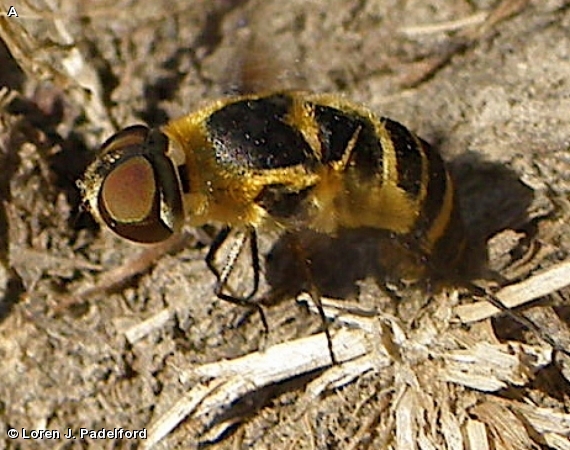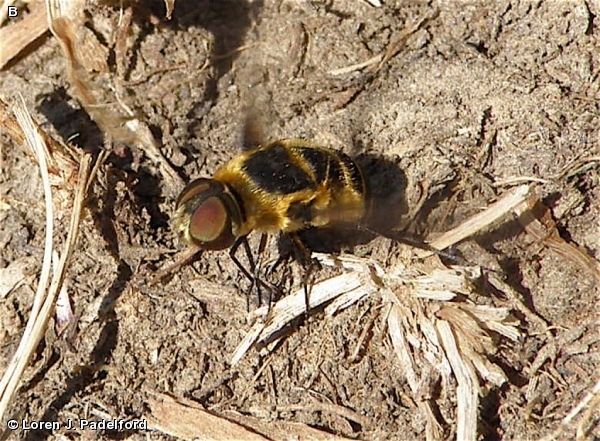
A small bee-like fly covered with orange hair, approximately 3/8 inch (10 mm) long. The top of the thorax is black and hairless. The abdomen is mostly black with interspersed orange bands. The legs are black and the eyes are dark brown. The fly shown here was moving its wings rapidly while stationary, thus the wings are not visible in the photo.
This bee fly has been seen and photographed once in mid-August at Neale Woods. There are 45 species in the genus Villa in North America. Most bee flies take nectar from flowers.
The fly in the photos appeared to be ovipositing eggs but, in fact, she was filling her “sand chamber” or “psammophore,” a ventral abdominal pocket into which the eggs are laid, and a feature unique to “higher” Bombyliidae. It is said that eggs are coated with sand in the chamber to facilitate release later. Ovipositing looks like little aerial dipping movements accompanied by flicks of the abdomen. Eggs (with sand as ballast) are actually thrown from the air into likely host areas. Most Villa sp. are parasitic on moth caterpillars.
Disclaimer: The content of NatureSearch is provided by dedicated volunteer Naturalists of Fontenelle Forest who strive to provide the most accurate information available. Contributors of the images retain their copyrights. The point of contact for this page is: Loren Padelford.

